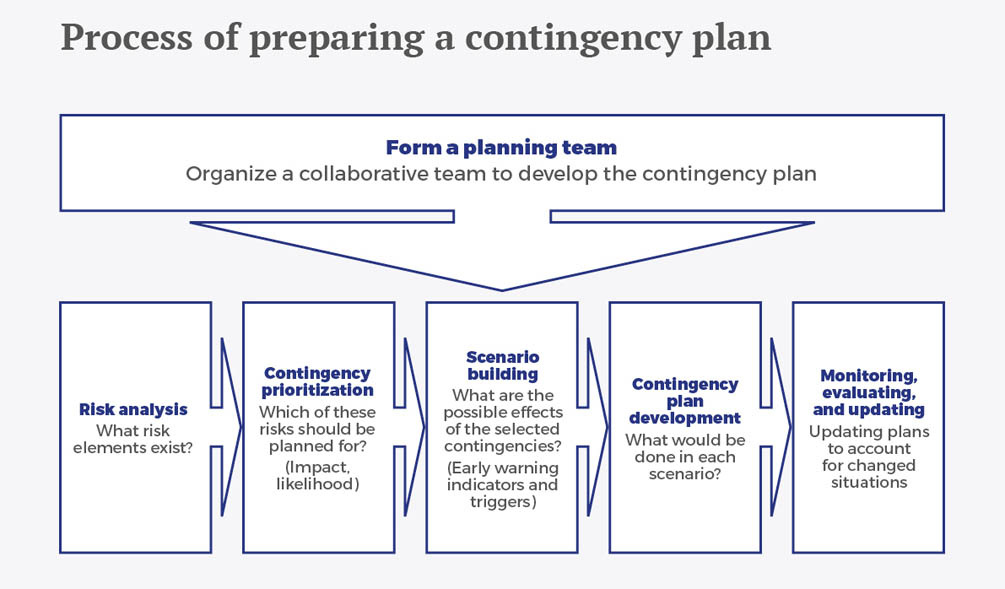Everything was working smoothly, some businesses were coming up with expansion plans, while some were entering new markets, but this was before the pandemic cast its shadow on the economy. Now every single industry is left covered with major unfortunate risks and looking out ways for managing what they have lost and be prepared enough to face the uncertain future. An efficient business contingency plan can help every business achieve preparedness for the future.
When it comes to contingency plans, it often measures what kind of risk is involved and to what extent, and the present circumstance we are in is unprecedented because it is a health crisis not financial. If it was the latter good fiscal planning would solve the issue but being a pandemic its contingency plan will be much different from any other, so any organization that is looking for ways to restart, grow and survive in the near future must brainstorm on two important areas of the contingency plan, first establishing all the health specifications by World Health Organization (WHO) such as regular sanitization, proper hygiene, standards to maintain social distancing, etc.
Secondly, when talking specifically about the manufacturing sector there should be some bifurcation of essential and non-essential staff, the units need a few men to operate machines, those employees must be present for production but the ones that can work offsite should be asked to stay at homes to achieve proper and safe functioning.
What Are the Potential Threat Areas?
A contingency plan must be followed in certain unforeseen events such as when businesses find themselves in situations of functional difficulties. The primary threat is the safety of the employees, one staff’s exposure to the virus may put the entire business in jeopardy hence the precautions must be adhered to strictly, in cases where the demand is not picking up or there is an unattended stock of raw materials the company should be ready with a proper fiscal roadmap.
Regardless of the situation, a well- planned and feasible contingency plan can help any organization survive the unexpected events confronting them.
The current scenario of the country demands companies to maintain and execute efficient financial plans and to give major stress on the safety of the employees as their wellbeing is the top priority. The two folds of the contingency plan must be achieved parallelly and simultaneously for it to be fruitful.
What Business Contingency Plan for MSMEs?
What separates a large- scale enterprise from a small business is the cash flow and availability of liquidity, big companies which are debt-free might have cash surpluses making them resume business easily within the next 6 months, as they are not over-leveraged. Whereas for MSMEs the risk is two-fold, that is from the health perspective as well as the financial side. Therefore, they need a proactive strategy concerning both the staff welfare and fiscal management. They can start with understanding various government schemes in favor of MSMEs to avail monetary benefits and pitch for loans, one must opt to keep their inventory to a minimum with cash reserves. Another necessary step is to create a clear communication channel with your employees. If you are having any problem with finances, be sensitive enough to sensibly interact about it and come with mutual solutions. In situations where time cut and wage cuts become necessary, they must be asked for co-operation and provided with suitable reasoning.
As a company, one must be successful in explaining that for the employees to remain healthy, the company must remain healthy.
How to Continue in the Post-COVID Era?
Even though business risks are considered to be temporary, this catastrophe might continue to hit the economy for long. Even when the situation normalizes, 2 years down the lane we might not know that something like this may happen, so the industries have to be prepared for a longer run, by monitoring constant maintenance of safety precautions as well as fiscal sustainability. The companies should ensure the presence of an internal team specifically made to monitor and govern the contingency plan and should be capable of taking the required actions.








